What is EC
The abbreviation EC stands for Electric Conductivity. The EC value represents the salt content – or the amount of nutrients in the soil or in the water – you’re giving your plants.
Demineralized water is purified water that contains no minerals or salts. This has an EC value of 0 and a pH of 7 (neutral).
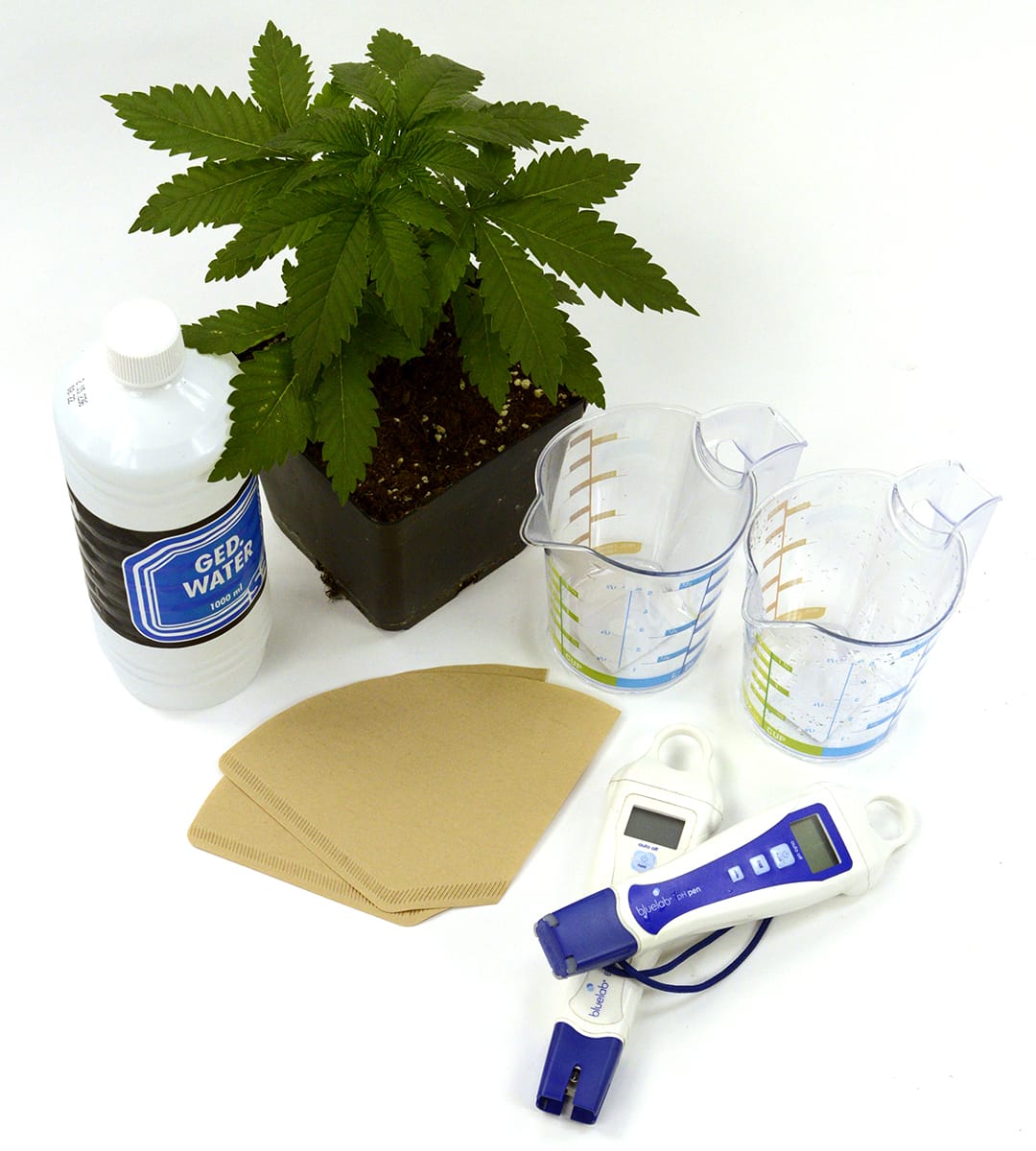
Tap water contains all sorts of minerals, such as calcium, magnesium and potassium, and has an EC value between 0.2 and 0.5 depending on where you live. Since tap water doesn’t contain all nutrients your plants need, you’ll have to provide them with additional nutrients.
Instead of sticking to the amount the manufacturer mentions on the label, you should measure the EC value of the water and add nutrients up to a certain value.
So, the EC value says something about the amount of nutrients in the water.
The importance of the correct EC value

If the EC value of the water you’re giving your marijuana plants is too low, your plants won’t have access to enough nutrients.
The plants therefore won’t grow and flower as well as they could, which obviously has an impact on the final result.
However, an EC value that is too high can also have negative effects on your plants. It’s possible that your plants absorb too many nutrients, which inhibits their development.
But it can also be the case that the nutrient salts start to build up in the soil, lowering the pH value.
A result of this is that the plant won’t absorb nutrients at all anymore, and the salts will build up even more. So make sure your pH values always stay within the correct range.
There is no standard EC value you can always provide your plants with. You start out low to let them get used to the nutrients and you then slowly increase it.
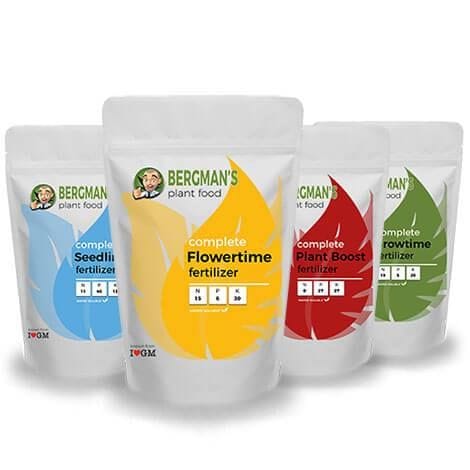
Marijuana Fertilizer
Ready to give your plants a little extra love? Bergman's Marijuana Fertilizer has everything marijuana plants need to produce a bountiful harvest.
You don’t give your plants any nutrients during the last week in order to flush out all minerals, because minerals give your marijuana a heavy taste and a narcotic effect.
If you’re growing in soil, you start after a number of weeks with a nutrient solution with EC 0.8 to 1.0.
From week 1 of flowering you give EC 1.0 and you increase this every week by 0.1.
You will end up with an EC of 1.7 if your plants flower for 8 weeks, because you don’t need nutrients during the last week.
Since rockwool doesn’t contain any nutrients, you’ll have to start by soaking the slabs with an EC of 1.5.
The first watering will be with EC 1.3 and you’ll increase this to EC 2.5 by the end of your cultivation.
If the nutrient intake goes well and you have healthy plants, it’s possible to give them some more.
If you’re plants don’t absorb the nutrients as well, you’ll have to take things a bit slower.
How to measure the EC value
You can measure the EC value of your water with an EC meter. You can get a cheap meter on Amazon for $10.
I always use a combi meter by Hannah that measures both EC and pH values. It will set you back $150 but you can use it for 5 years.
Measuring the EC value is super easy. Turn on the meter, put it in the water and read the value.
This value only tells you about the total amount of nutrient salts in the water, and not what these salts consist of.
So you don’t know the ratio between nitrogen, potassium, phosphor, calcium, etc. Therefore you should always use a proper brand of nutrients that is specially developed for marijuana plants.

If you want to increase the EC value of your water, simply add more nutrients. And if you want to lower the EC value, just add some more tap water to your nutrient solution.
However, make sure that you always arrange the EC value first and lower the acidity of the water second. This is because adding water or nutrients affects the pH value.
Measuring the EC value of your soil
The advantage of growing on soil is that it creates a buffer for water and nutrients, so mistakes regarding your EC won’t be immediately punished.
A disadvantage is however that nutrient salts can build up, increasing EC values and lowering pH values.
The value at the roots of the plant will greatly differ from the nutrients water you’re providing, which can lead to major problems.
There are many different factors that influence the intake of nutrients. A small example;
Let’s say it’s been a bit too cold in your grow room. A low environment temperature decreases evaporation through the leaves.
This lowers the suction power of the plant, which is needed to absorb nutrients through its roots.
These nutrients will remain in the soil, creating an acidic environment for the roots.
A high acidity in the soil will, in turn, worsen the functioning of the roots= hairs, further lowering the plant’s ability to absorb nutrients.
In this way, the EC and pH of your nutrient water can be perfect, but your plant can still experience a shortage or surplus.
That’s why it’s important to measure the pH and EC values of your soil every two weeks.
If you’re growing outdoors , it’s a good idea to measure a sample of the soil you’re growing your plants in. It is super easy and can help prevent many problems later on.
Measuring the EC
- Mix 1 part soil with 1 part demineralized water
- Let it sit for 24 hours and stir it now and then
- Put it through a coffee filter
- Measure the EC value of the water
Now we’ll discuss a more elaborate step by step description and you’ll be provided with a shopping list. First, let’s talk about the materials you’ll be needing;
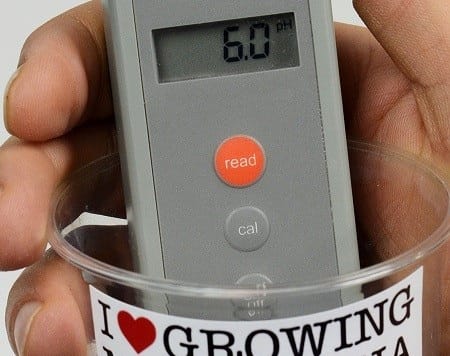
Requirements
- EC meter
- Demineralized water
- 2 Measuring cups
- 4 Coffee filters
Take 3.5 fl ounces of soil, as close to the roots as possible, and mix this with 3.5 fl ounces of demineralized water in your measuring cup.
Demineralized water doesn’t contain salts, thereby having an EC of 0. The pH at room temperature should therefore also be neutral, so 7.0.
You can purchase demineralized water at a gas station or drugstore. Let the mixture sit for 24 hours and regularly stir it a bit to make sure all salts will properly dissolve in the water.

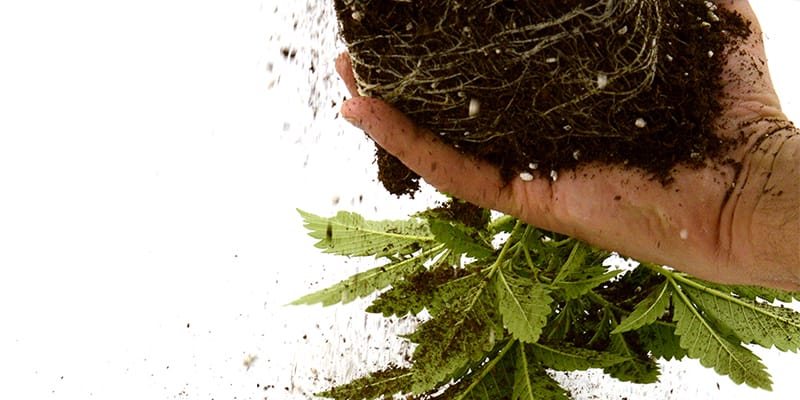
Take the plant from the pot and shake of some soil
After 24 hours, you put the mixture through a coffee filter into the other measuring cup. Repeat this process until you have a clear liquid.
Measure the pH values of this liquid to find out what the values around the roots of your plant are. The pH should be about 6.
If your EC value in the soil is 1.0 and you want it to be 1.5, the next time you water the plant, use water with an EC value of 2.0.
With this method, the EC value of your soil will become about 1.5. Take another measurement after a couple of days to be completely sure.
Measuring the EC value of Rockwool
Rockwool is very sensitive to subpar pH levels, because it doesn’t create a buffer for nutrients or hydrogen ions. Most rockwool cubes made for growing have an EC of 0 and a pH of 7.
You will have to increase the EC value before you can start growing. You can do this by leaving them in water with an EC of 1.5 overnight. The rockwool will take on the value of the water.
Since rockwool doesn’t form a buffer, you have to pay even closer attention to your EC values.
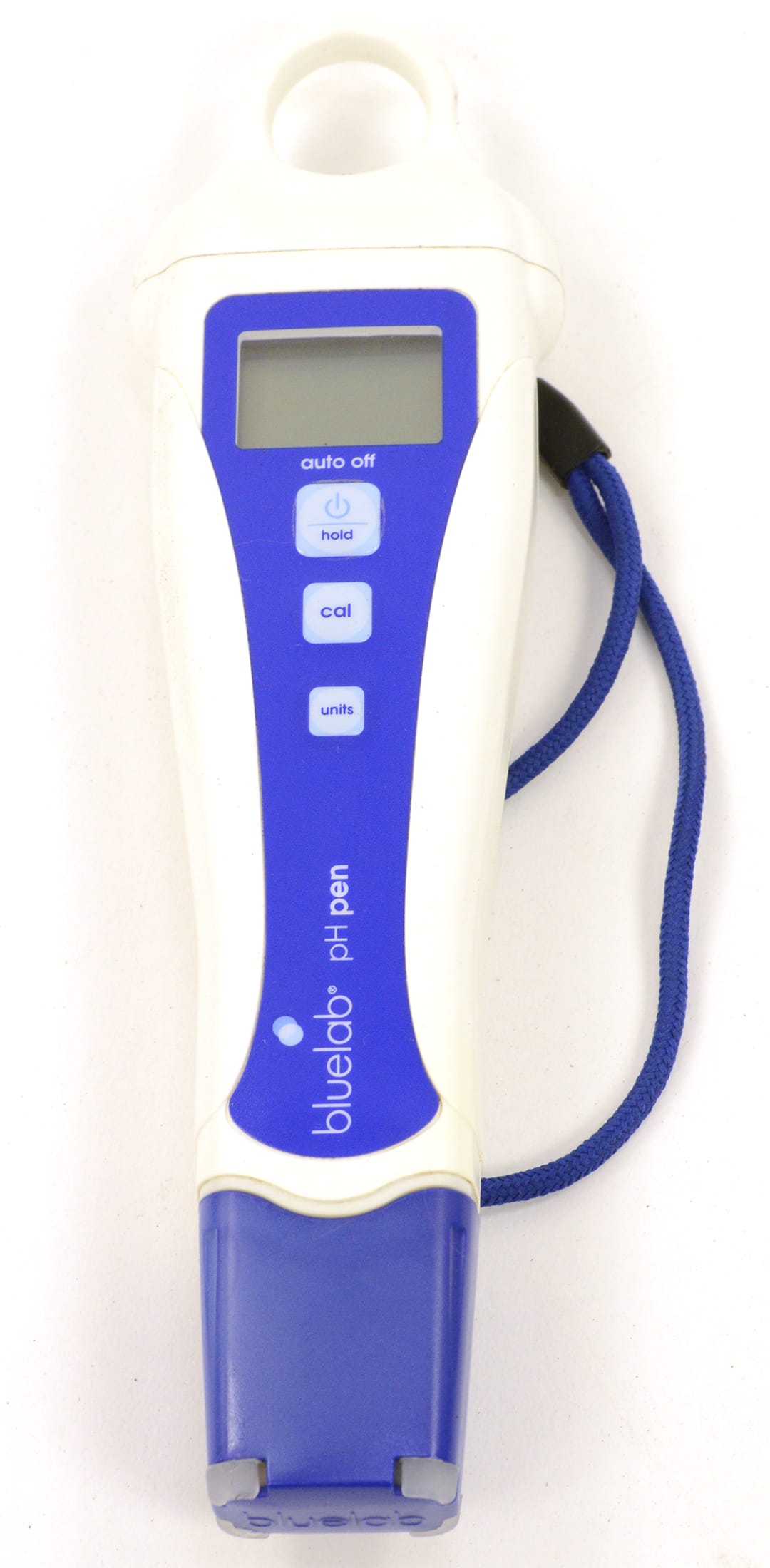

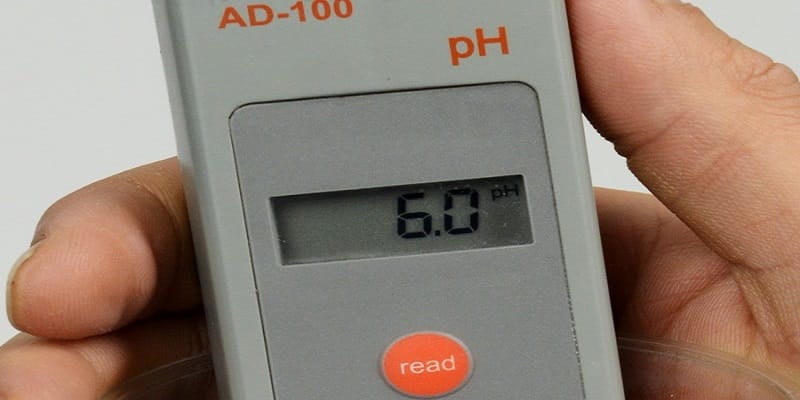
Besides rinsing the slabs, you’ll have to regularly measure the EC value of the slabs. This is actually quite easy; take different water samples in the slabs using a syringe.
The best place to conduct a correct EC measurement is close to the roots. Put all water samples in a measuring cup and measure the EC.
If this is too high, you’ll have to rinse it for longer. If it’s too low, you’ll have to increase the EC of the nutrient water a bit until you get the correct values.
The maximum EC value
We use a so-called incremental scale when determining the EC value. This means that we gradually increase the EC from the beginning to short before harvest.
We increase the EC by 0.1 every week, and we continuously keep an eye on the plants, because plants show their displeasure through discolorations, turning of the leaves and other phenomena.
As long as the EC value is the only thing that changes, discolorations and other changes can’t have a different cause than an EC value that’s too high.
As soon as you notice unexplainable discolorations, you’ll have to go back to the previous EC value, back when your plant didn’t show color changes.

Marijuana Fertilizer
Ready to give your plants a little extra love? Bergman's Marijuana Fertilizer has everything marijuana plants need to produce a bountiful harvest.
An additional rinse can’t hurt in getting the plants to recover from the shock as quickly as possible. A week later, when the plants have recovered, you can try again to raise the EC.
If the plants react in the same way, you’ll know for sure that you’ve reached the maximum EC value during this harvest.
The hardness of tap water can differ between areas. The calcium and other substances in the water are salts that count towards the number of nutrient salts in the solution.
As we now know, we would like certain salts for our plants, but most salts are not desired.
It’s possible to experience a nutrient deficiency, even though you’re giving a nutrient solution with an EC of 1.8. If the tap water already has an EC of 0.5, only 1.3 EC (1.8-0.5) in nutrients will be added.
Because of the large differences in hardness of tap water, the EC value of a solution that is prepared in the exact same way can greatly differ between areas.
It’s therefore impossible to provide you with a standard recipe for the amount of fertilizers you’ll need. You should thus be careful when trying successful recipes from other growers.
If you have to work with a relatively high EC because of the high natural EC of your tap water, there’s a higher chance of undesirable salt build-up around the roots.
In this case you might have to rinse your plants more often. You can also water them with demineralized water or use a filter, but these alternatives are quite expensive.




